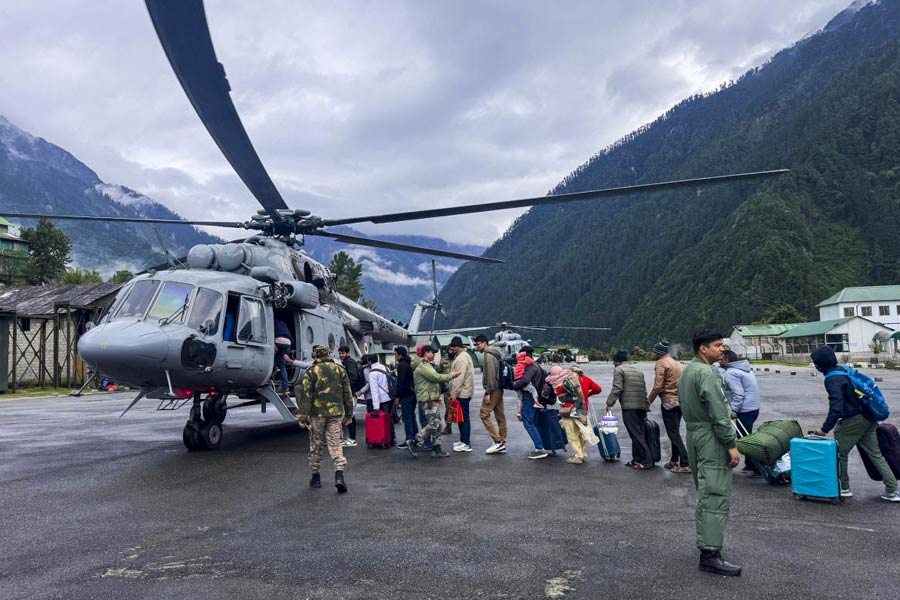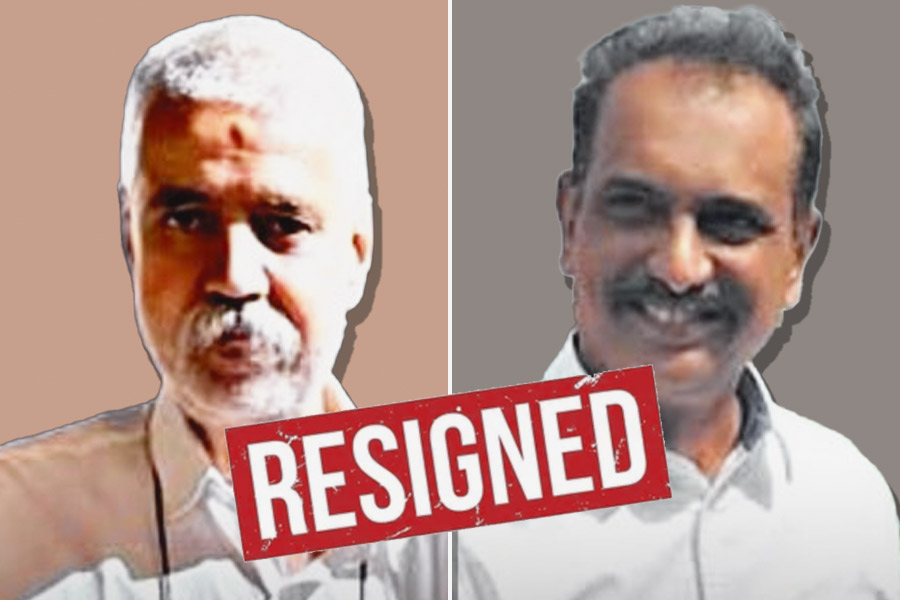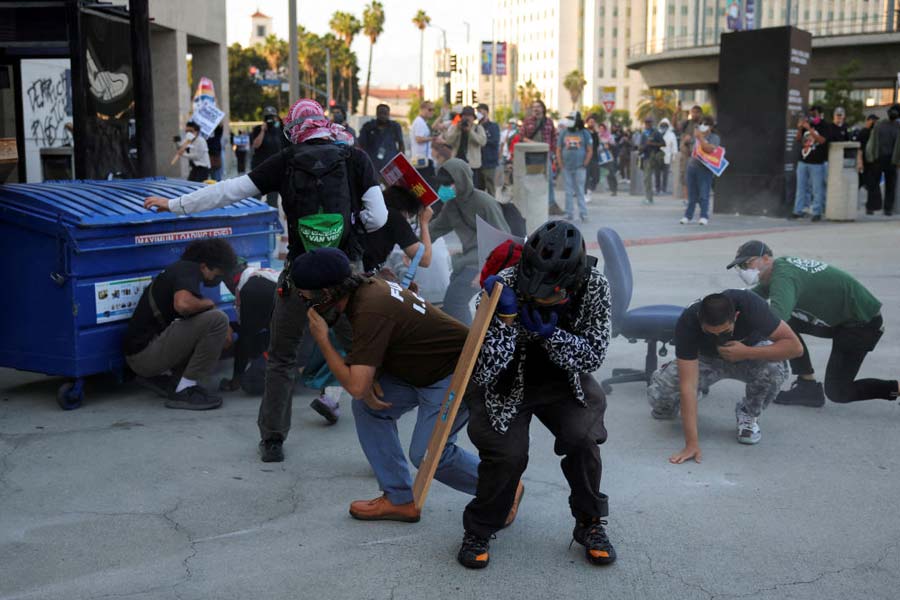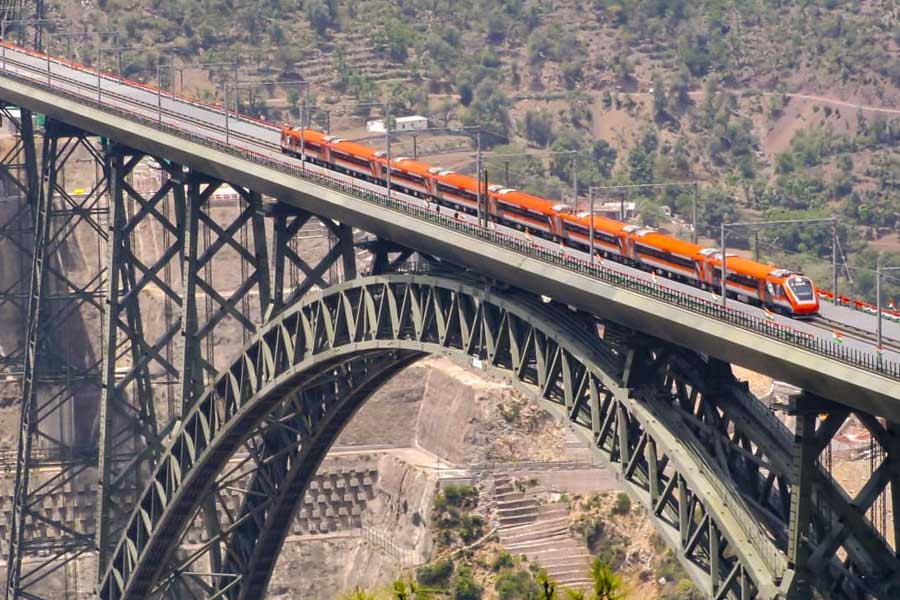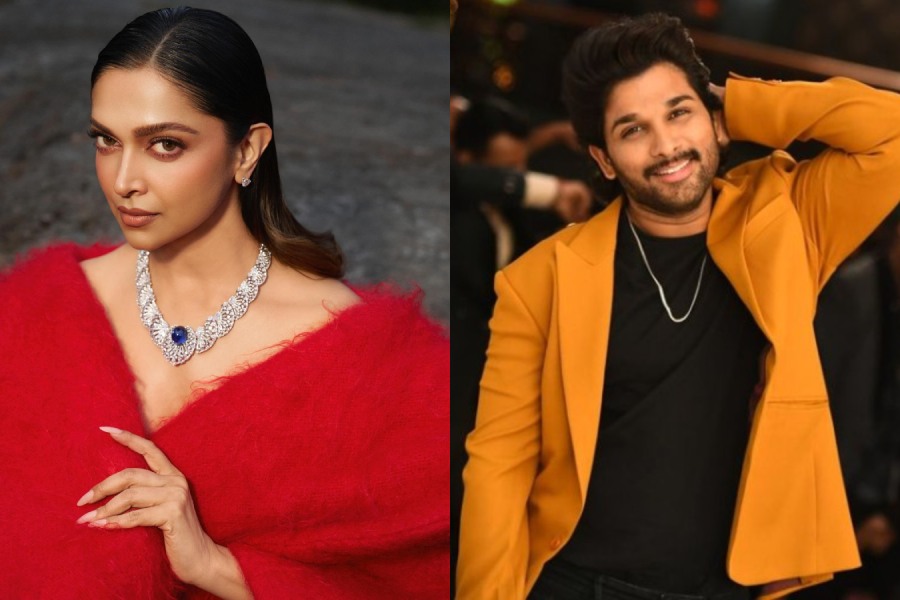From spacious spaces to tiny tight rooms, a studio is the best friend and a lifeline for many musicians. It’s the testing ground for new musical ideas. It’s where they run to when inspiration strikes. While musicians with home studio set-ups can hit the studio straight from the bed to try out new sonic ideas, the rest flock to the bigger ones to make use of their facilities. t2 tours seven studios...
Neel Adhikari’s home studio
Address: His home on Raja Basanta Roy Road
Set up: Eight years ago
Why: To work on his own projects, recordings and films. His logic thrives on what an artiste thrives on — “inspiration”. “I set up the studio at home to capture ideas fresh before they get diluted by daily life and doubt. Also the more recording history a room has, the better and more focused the vibe. It’s my vibe,” explains Neel, who confesses to the cons of having your own studio set-up. “Sometimes I end up bathing and brushing my teeth at 4pm because I hit the studio straight from bed!”
Tech tools: It’s a tiny tight room that is “great for recording guitars and vocals”. A few chosen condensers and two systems running parallelly on a Mac and a PC; two sound cards hooked up to a pair of Yamaha monitors and AKG headphones. He’s also got a tube compressor, a tube guitar amplifier and a tube mic channel. Done up with bright yellow lights and table lamps for a “dim ambience”, his studio works on Cubase 6.5 (one of the latest versions of a German music production software).
USP: Using the right mic for the right instrument is his mantra. For this, Neel prefers using real instruments and then altering their sounds digitally. “In today’s virtual and digital world it’s important to choose where the soul of a sound comes from. For example, a harmonium can be made to sound like a church organ. We don’t have a real church organ in Calcutta that we can record frequently but we do have harmoniums.”
Notable projects: Neel and the Lightbulbs’ House in a Car EP, Ganesh Talkies’ EP, three Gandu Circus tracks, soundtrack of Tasher Desh and Q and Nikon’s Ludo.
Vikramjit ‘Tuki’ Banerjee’s Krosswindz Studios
Address: At his house in Tollygunge
Set up: Since 2001
Why: What started out as a spare room that could be used for recording purposes is a full-blown studio now where Tuki records. “The biggest advantage of a home studio is the relaxed feel. Knowing that the red recording light is not on and hence the meter is not ticking away and no bills are piling up,” smiles Tuki. The studio also is his “laboratory to try sonic experiments and a testing ground for new musical ideas.” It’s also a storehouse of all the esoteric musical equipment Tuki has picked up over the years.
Tech tools: Walled within an 11 ft by 10 ft space, Tuki feels his studio provides for a “great space” that he knows very well, including the “sweet spots” for the best tones. “I have gone the do-it-yourself route as per soundproofing and dampening of acoustic surfaces. I have used carpets, cushions, wall hangings and other items to acoustically treat the room and it works for me,” says Tuki. The recording system is uniquely spread over three machines with the fourth one being the iPad. Tuki uses a computer as a giant remote control device to control his external analog and digital synths, gizmos and SFX processors. “Mostly the midi stuff happens on the laptop and the audio-intensive apps run on my main desktop machines,” he adds. Among hardware synths, Tuki digs his Roland MSE1 String ensemble, which mimics the sound of a full-fledged symphony orchestra. “I also own the erstwhile Kurzweil K2500R synthesiser workstation as famously used by Pink Floyd even till this day,” says Tuki.
USP: “Guitar sounds are my forte and that’s where my set-up really shines as I have a plethora of gear that I have found the correct algorithms for!”
Notable projects: All Krosswindz albums post- 2001, three film scores — Ujaane Padma Bhashe, Khashi Kotha and Kolkatar King.
 |
| Fossils rehearses at Rupam’s Working Class Zero |
Rupam Islam’s Working Class Zero
Address: South End Park
Set up: Fully functional from 2010.
Why: Rupam had his own reasons for setting up Working Class Zero. “As a rock singer, the dynamics or the range of expressions that I deliver is huge, from whispers to screaming. For that I need a certain kind of monitoring when I perform. If I go to record in other studios and if I chance upon a recording engineer with whom I have never worked before, it becomes very difficult to train him in the way that I want to get the monitors. So I decided that if I set up a studio it would be really helpful for my work. Initially I was the recording engineer of my studio. But later on Prasenjit ‘Pom’ Chakrabutty joined and since then we have shared a great rapport as not just music mates, but friends,” says Rupam.
Tech tools: Mac Pro 4.1 running Logic Pro 10 and Cubase 7 as DAWs; audio interface: Focusrite Saffire Pro 40 with Focusrite OctoPre Preamps; UAD 710 Twinfinity tube/solid-state mic preamp; Yamaha MSP5A Studio monitors
USP: “Most of the recording studios in Calcutta are extremely small in size. I can vouch for the fact that my live room is definitely one of the largest if not the largest in Calcutta. My live room is 28ft in length. I get a lot of ambient room reverb when I record drums or other acoustic instruments/vocals here. Anupam Roy, one of the most sought-after sound engineers of India, has said that he hasn’t recorded such good drum sound anywhere else in India. I also have a great tube vocal preamp, which not only improves the warmth of the vocals, but also makes it rather easy for the vocalist to give the takes.”
Notable projects: Rupam Islam’s Na Hanyate and Nishkromon, Mainak Bhaumik’s Bedroom (Rupam and Allan Ao), Suman Mukhopadhyay’s Mahanagar@Kolkata (Rupam Islam), Fossils 4, Bertie Da Silva’s project (yet to be released);
also vocal takes of all films that Rupam has sung in since 2011. The studio was also featured in the film Jaatishwar.
Bodhisattwa Ghosh’s home studio
Where: Jodhpur Park
Set up: Around 2006
Why: The guitarist of the band Zoo was always fascinated by sound recording. “Moreover, back in college, I was playing with Insomnia and Crystal Grass. We always needed to record demos to send here and there, and hiring a studio each time was a very expensive proposition, considering the fact that we were all students back then. So I decided to invest in my personal home studio to start the whole process.”
Tech tools: “As far as the room is concerned, it is a small room attached to the terrace of my house, which has been soundproofed by very basic and cheap ingredients like carpets, thermocol, rubber mats, thick curtains and egg cases! And my computer is a PC desktop which has an Intel Pentium Dual Core Motherboard, expandable 4 GB DDR Ram, an M-Audio Delta 1010LT Sound Card with Patch Bay, Roland DS30 Near Field Flat Monitors. For recording and mixing I use softwares like Nuendo and Cubase, and for programming I use Reason, Fruity Loops Pro and certain VSTs,” he adds.
USP: “Unlike any other home studio, you can actually record drums, thanks to the 10 in 10 out sound card. Since my studio is also my rehearsal space, I can actually record each rehearsal and immediately listen back for reference and analysis,” says Bodhi.
Notable projects: Zoo’s The Attic Sessions EP. Also Zoo’s debut album Atoms and Combinations was arranged and designed there before the recording at Sonic Solution. All the guitars for Kendraka’s albums Tathastu and The Candy Album were done there; The Saturday Night Blues Band has “recorded around four-five songs”.
 |
| The Supersonics record their second album at BlooperHouse Studios |
BlooperHouse Studios
Address: Sector V, Salt Lake
Set up: In 2011
Why: BlooperHouse Studios was set up to “help promote young artistes and musicians”. “They needed a platform, because the other studios in town were too focused on commercial work and making music for films. The idea was to support independent musicians, and we kept our charges pretty nominal (Rs 800 per hour),” says Meghdut RoyChowdhury, the head of operations of BlooperHouse Studios. The studio covers an area of around 2,300 sq ft.
Tech tools: A complete recording suite consisting of four rooms, one console room with the majority of the equipment and machines, one huge live room for drum recordings and choirs/group recordings, two smaller live rooms for instruments and vocal recording.
USP: It’s a youth-oriented studio which not only has “a
proper music recording/mixing/mastering set-up, but also a fully equipped video production suite”. “We have state-of-the-art equipment,” says Meghdut. Bands are encouraged to “go live together, taking full advantage of the space”. “This way, the product is more cohesive, and the band has a live feel to the song,” he says.
Notable projects: New albums by The Supersonics, Neel and the Lightbulbs, Ganesh Talkies among others.
Allan Ao’s ‘bedroom studio’
Where: Ballygunge Circular Road
Set up: 2006
Why: The ‘bedroom studio’ also doubles as the guest room at Allan’s place! “Back in 2007-08, the younger bands then didn’t have very good-sounding recordings of their songs, which is when I felt the need to help them translate their songs into decent-sounding recordings,” says Allan, guitarist of Fossils.
Tech tools: It is as DIY as it gets. “The room sounds tight and the mixes translate pretty decently. I had once recorded vocals using a closet in the room as a vocal booth,” he smiles. The set-up is very basic — Windows PC with Cubase and 3rd party VSTs, Focusrite sound interface, Yamaha MSP 5s monitors, Beyerdynamic headphones.
USP: “What I offered the bands was a cost-effective solution by charging them very reasonably,” smiles Allan.
Notable projects: Guitar tracking and mixing of Fossils 4; Gandu OST guitars and the song Kali was recorded here; mixes of most episodes of The Soundcheck Project.
Raja Narayan Deb & Shomi Chatterjee’s Sonic Solution
Where: Lake Gardens
Set up: In 2010
Why: It was a “childhood dream” for Raja (inset) to have his “own professional studio set-up”. “I always wanted to have a professional or commercial studio. So when I had the opportunity, I partnered with my sound engineer friend Shomi Chatterjee to start Sonic Solution,” says Raja.
Nitesh Sharma is the third partner.
Tech tools: Sonic Solutions now has three studios — A, B and C under one roof — complete with live recording floors and a post-production room. Studios A and B run Protools HDX, and are 5.1 equipped, while Studio C is stereo and runs standalone Protools 10. “We’ve got one of the finest collections of microphones comprising Neumann U87, U89, TLM103, Blueberry and Seinheiser which gives the best quality in vocal or instrument takes,” points out Raja.
USP: Raja feels that “a comfortable studio and sound expertise” are the core components to a great studio. The studio’s charges are Rs 850 per hour.
Notable projects: Anupam Roy, Cactus, Underground Authority, Zoo have all worked here. Film projects include Kahaani, Ashchorjyo Prodeep, C/ Sir and Chander Pahar among others.
Bassist Sanket Bhattacharya (with Lakkhichhara and Anjan Dutt), who provides audio-visual strategies to studios as a business development manager for AV Solutions, chalks out three models for a Do-It-Yourself studio for t2...
For students and starters Budget: Rs 10,000
1. A quiet room of any size
2. A desktop computer with at least 1 GB RAM and a 500GB Hard Disk Drive
3. Microphone by either Shure or Sennheiser @Rs 3, 500
4. Computer speakers @ Rs 2,000 to Rs 5,000
5. Reference headphones: Sennheiser HD 180 and 203 or AKG K44, K77 or Beyer Dynamic @ Rs 3,000
6. Soundcard starting @Rs 2,000
7. Free downloadable softwares like Nuendo, Protools MP, Soundforge and Audacity
For sound students/ new musicians: Budget: Rs 36,000
1. A quiet room of any size
2. Acoustic treatment or wall padding to correct unnecessary rumbles in the room. Acoustic pads are available in the shape of squares and rectangles while bass traps and diffusers can be used for acoustic correction
3. A desktop computer
4. Condenser microphone from Shure or AKG @ Rs 3000 to Rs 8,000
5. 2 in 2 out USB soundcards by Focusrite or Presonus or Motu @13,000
6. Sound softwares like Protools, Cubase and Nuendo @ Rs 20,000. Students get concessions up to 60 percent!
7. Reference headphones by Sennheiser or AKG or Beyer Dynamic @ Rs 3,000
For musicians /studios for advanced and professional quality:
Budget: Rs 50, 000
1. A quiet room of any size
2. Acoustic treatment or wall padding; bass traps and diffusers for acoustic correction
3. Condenser microphone from Shure or AKG @ Rs 12,000 (for higher quality)
4. Nearfield Monitors @Rs 15, 000 to Rs 32,000
5. Sound softwares like Protools, Cubase and Nuendo @ Rs 20,000
Arindam Chatterjee and Mohua Das
Which is your fave recording studio in Cal? Tell t2@abp.in





